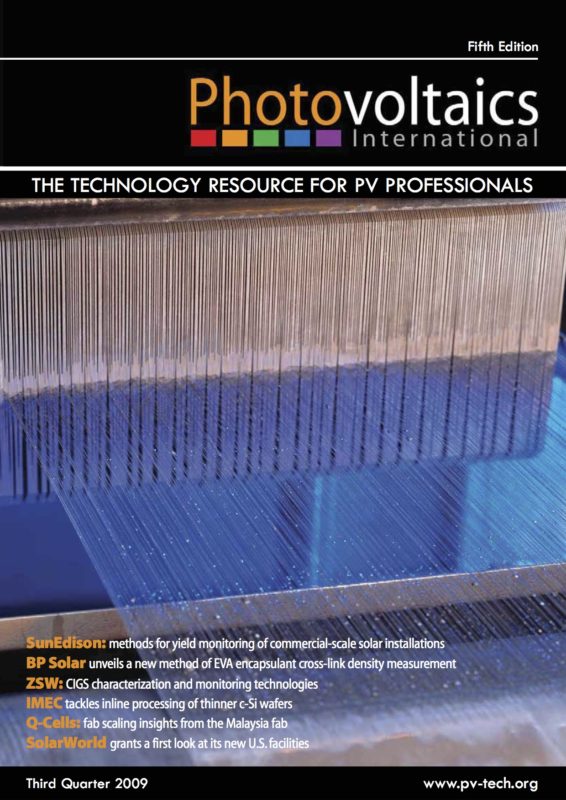By Zhiyong Xia, Materials Scientist, BP Solar International, Inc.; Daniel Cunningham, Module Technology Manager, BP Solar International, Inc.; John Wohlgemuth, Solarex, BP Solar International, Inc.
Among the different packaging materials used in photovoltaic solar modules, ethylene vinyl acetate-based (EVA) encapsulants play an important role during the lifespan of the module assembly. Prior to lamination, EVA is a thermoplastics polymer containing a number of additives. During the lamination process, EVA cross-links into a three-dimensional network structure, i.e., a thermoset, which provides protection for solar cells against detrimental environmental conditions. Since EVA has a very low glass transition temperature and melting points, proper cross-link density has to be achieved through the lamination process to prevent the EVA from cold flowing in the field. As a result, module manufacturers constantly monitor the cross-link density or gel content of EVA after lamination. This paper proposes a new method of measuring this density value while avoiding many of the current pitfalls.


